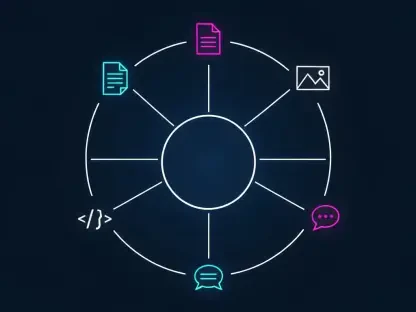In the fast-paced world of accounting, technology serves as a catalyst for transformation, streamlining traditionally intensive tasks into efficient, automated processes. Optical Character Recognition (OCR) and Artificial Intelligence (AI) stand at the forefront of this technological evolution, drastically changing how financial data is processed and interpreted. These innovations not only improve speed and accuracy but also significantly reduce human error. Accountants are experiencing profound shifts in their roles, finding themselves freed from manual data entry and able to focus on more analytical duties due to these advancements. This article explores the historical and current integration of OCR and AI in accounting, highlighting their synergy in modern applications and their collective impact on productivity and accuracy.
The Evolution of OCR Technology
The origins of OCR technology date back to the 1970s, thanks to the pioneering work of Ray Kurzweil, whose invention of the “omni-font OCR” paved the way for processing texts in various fonts, setting a foundation for future advancements. By the early 2000s, the introduction of cloud-based OCR applications marked a pivotal turning point, as these tools enhanced the complex data extraction processes necessary for burgeoning business needs. However, despite these advancements, traditional OCR faced limitations, particularly in processing poor-quality images, handwritten text, or dealing with multiple languages and unique fonts. These challenges underscored the need for integrating advanced AI technologies, which have since transformed the capabilities of OCR.
As AI made its way into the realm of OCR, the technology achieved significant developments in recognizing and interpreting diverse formats and styles of text. This integration breathed new life into OCR’s potential, overcoming its former barriers by tapping into machine learning algorithms. These algorithms enable OCR systems to decode more intricate layouts, refine data accuracy through learned experiences, and predict trends within financial documents. OCR has evolved from a simple text converter to a powerful data interpretation tool that can significantly optimize financial document processing, providing accountants with reliable insights and freeing them from time-consuming manual entry tasks.
AI’s Role in Enhancing OCR Capabilities
The impact of AI in enhancing OCR capabilities is profound, with AI’s ability to analyze vast quantities of data and detect patterns leading to marked improvements in efficiency and accuracy. Through machine learning, AI empowers OCR systems to adapt to new forms of documents and languages over time, continually improving the quality of data extraction. Consequently, these technologies minimize the risks of potential errors or anomalies, offering an unprecedented level of reliability in financial data processing.
By automating mundane and repetitive tasks that traditionally consumed a substantial amount of time, AI shifts accountants’ focus towards more strategic functions that demand their expertise. The automation of these routine activities empowers professionals to engage in higher-value work, transforming their roles within the industry. This shift not only enhances efficiency but also propels the financial profession into an era of data-driven decision-making and strategic analysis. Accountants can now spend more time interpreting data rather than entering it, ensuring organizations can respond swiftly and more effectively to financial challenges and opportunities.
Leading Accounting Tools Utilizing AI and OCR
Several sophisticated accounting tools have emerged, harnessing the combined strengths of AI and OCR to revolutionize financial data management. Dext, formerly known as Receipts Bank, is a standout solution, utilizing AI-powered automation to streamline financial operations for global reach. With advanced multi-currency support and customizable automation rules, Dext transforms how users manage financial data, demonstrating significant value within the accounting community. It has become indispensable for numerous professionals, managing document analysis for approximately 35,000 accounts as of 2023 and saving thousands of work hours each month.
Hubdoc and AutoEntry also represent significant players in this landscape. Hubdoc integrates seamlessly with Xero, automatically fetching documents from linked accounts and providing basic AI categorization features. Despite having less sophisticated AI compared to Dext, Hubdoc remains a preferred choice for its seamless integration into the Xero ecosystem, which has been strengthened since its acquisition in 2018. AutoEntry distinguishes itself with capabilities tailored to invoice and bank statement processing, notably its ability to extract line items from invoices—a niche feature absent in its counterparts. These tools exemplify the diversity and specialization of AI and OCR applications in modern accounting, providing tailored solutions to meet varied organizational needs.
Distinct Features of Hubdoc and AutoEntry
Hubdoc’s unique qualities should not be overlooked, particularly in its seamless integration with Xero’s accounting software. The tool’s ability to automatically fetch documents from pre-linked accounts enhances data accuracy and reduces the need for manual input. Although Hubdoc features a more basic AI, it offers sufficient categorization capabilities that can streamline several routine accounting tasks, making it a favorable option for businesses operating under Xero. Since its acquisition, it has played a critical role in Xero’s ecosystem, contributing notably to its revenue while operating autonomously.
AutoEntry’s unique selling points lie in its detailed data extraction abilities, especially in handling line items from invoices, lending it a competitive edge. This capability makes it especially valuable for businesses handling complex invoices, offering unparalleled flexibility with its credit-based payment system designed for affordability. As a result, small businesses and sole traders find AutoEntry’s tailored functionalities particularly appealing, allowing them to optimize costs while enjoying comprehensive document processing services. In an industry where efficiently managing documents can dictate business success, tools like AutoEntry are invaluable.
Considerations for Choosing the Right Tool
Selecting an appropriate accounting tool necessitates a careful evaluation of document types prevalent in the business. For instance, businesses primarily dealing with invoices and receipts may find Hubdoc and Dext more aligned with their needs, while those requiring comprehensive bank statement management may prefer AutoEntry. Each tool offers distinct advantages tailored to specific document types, and considering this is vital to optimizing their utility in accounting practices.
Budget considerations also play a critical role in tool selection. Accountants should carefully assess processing volumes in juxtaposition to software capabilities, weighing the cost against the potential benefits each tool offers in automation and AI proficiency. For instance, while Dext delivers advanced AI functionalities at a premium, Hubdoc offers a cost-effective solution for Xero users, included in the software package. Understanding these financial implications and evaluating software integration capabilities help accountants maintain efficiency while adhering to budget constraints.
The Broader Impact on Accounting Practices
OCR technology traces its origins to the 1970s, primarily due to Ray Kurzweil’s groundbreaking “omni-font OCR.” His development allowed for the processing of text in various fonts, which laid the groundwork for future technological advancements. In the early 2000s, OCR experienced a significant evolution with the introduction of cloud-based applications. These tools were pivotal in enhancing data extraction, meeting the growing demands of businesses. However, traditional OCR faced significant challenges, especially in handling poor-quality images, handwritten texts, and documents featuring multiple languages and various fonts. This highlighted the necessity for integrating innovative AI technologies. The inclusion of AI revolutionized OCR by vastly improving its ability to recognize and interpret diverse text formats. Machine learning algorithms have expanded OCR’s capabilities, allowing for better accuracy and efficiency. Today, OCR systems are essential for processing financial documents, offering accountants and businesses reliable insights while reducing time spent on manual data entry.









